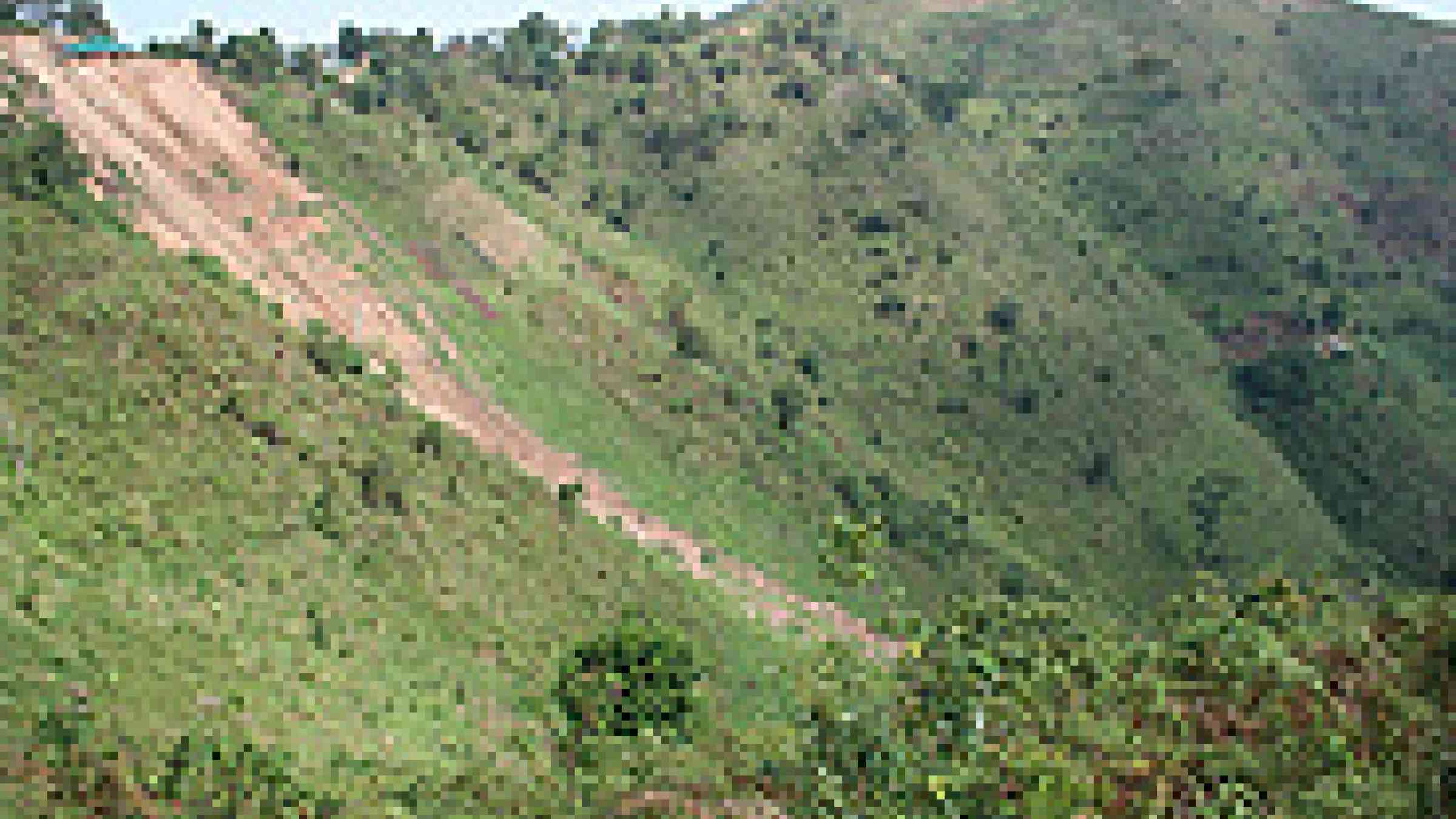Please help us improve PreventionWeb by taking this brief survey. Your input will allow us to better serve the needs of the DRR community.
Uganda: Deadly landslide devastates villages despite early warnings

Photo of a landslide in Uganda by Flickr user, Kaj17, Creative Commons Attribution-Noncommercial-No Derivative Works 2.0 http://www.flickr.com/photos/kajisagook/3914734458/
By Anne Wanjiru, IFRC in Nairobi
What started as unusually heavy rains in Nametsi, Eastern Uganda, resulted in a catastrophic landslide that completely wiped out three villages. The Uganda Red Cross immediately deployed some 60 volunteers to respond to the disaster that caused the deaths of more than 93 people and left 265 others missing.
Only 43 survivors were rescued from the debris many of them with serious injuries such as head cuts and broken limbs.
Two years ago, the Red Cross began a sensitization campaign as part of a disaster risk reduction program, in a bid to relocate the residents of this area infamous for its landslides. Many were adamant not to leave their ancestral homeland, saying it was the only place they have known all of their lives.
“This attitude is common in disaster prone areas around the world. Post-floods agriculture often bare best harvests and people expose themselves to unnecessary risks,” said Brennan Banks, a regional emergency disaster management delegate with the International Federation of Red Cross and Red Crescent Societies (IFRC) in Nairobi. “We can not force people to relocate. So, together with the relevant authorities, we need to think of what early warnings can be put in place while reflecting on how to convince people to accept alternative settlement opportunities before such catastrophes occur.”
Mapping hazards
The Red Cross hazard mapping showed that Nametsi was a high risk area for landslides and the structures there could not withstand a force of nature of such scale and magnitude as recently seen. A government report also states that commercial deforestation and land clearance for agriculture is also aggravating the situation.
The massive landslide that struck the ill-prepared communities of Nametsi, Namakansa and Kubehwo three days ago left massive destruction in its wake. About 100 school children said to have taken shelter at a local trading centre are still missing and the local health centre and church were completely wiped out.
Red Cross volunteers were first on the scene and have been working tirelessly, together with the local authorities, in an effort to rescue and evacuate victims. Hampered by bad weather and lack of adequate tools, digging through the 10 metre deep thick walls of mud and rocks has proven to be an immensely slow process.
“It is a difficult operation. We have to trek for 3 hours up the mountains to reach the site of the landslide. The area is impassable for vehicles so we cannot bring up badly needed heavy equipment. We have to do the digging by hand or using hoes which is slow and grueling,” according to Hasifa Kabejja, who is on the ground with the Ugandan Red Cross.
Search and Rescue, Aid and Information
Army soldiers were deployed to assist with the rescue operations and are camping at the site. Frustrated with the slow pace of the rescue operations many of the relatives searching for their loved ones have also opted to camp at the site despite the harsh weather.
Apart from search and rescue activities, the Red Cross has been distributing relief items such as tarpaulins, blankets, cooking sets and water purification tablets to more than 1,500 affected families. However, essential household items as well as public health dissemination sessions, with specific focus on cholera and malaria controls, as well as distribution of treated mosquito nets, is still needed for more than 1,000 affected families.
Wake Up Call for Early Warning Systems
To assist the operation the IFRC has deployed 256,963 Swiss Francs from its Disaster Emergency Relief Fund (DREF), to enable the Red Cross to respond to the immediate needs of 5,000 people affected by the landslide and floods.
Heavy floods have been compounding nine districts in the region and in Northern Uganda, while some areas such as Bukwa district have been completely cut when the main road was blocked by the landslide.
“This disaster has served as a wake up call for both the Red Cross and the local authorities to quickly establish resettlement sites and evacuation procedures - and also for the 2,000 families still living in high risk areas to better heed the early warnings,” said Michael Nataka, the Uganda Red Cross Secretary General.
Explore further
Please note: Content is displayed as last posted by a PreventionWeb community member or editor. The views expressed therein are not necessarily those of UNDRR, PreventionWeb, or its sponsors. See our terms of use
Is this page useful?
Yes No Report an issue on this pageThank you. If you have 2 minutes, we would benefit from additional feedback (link opens in a new window).